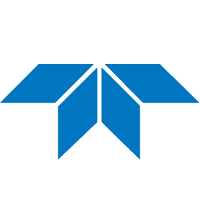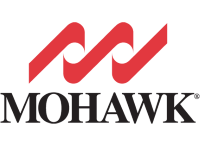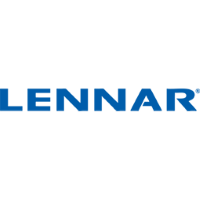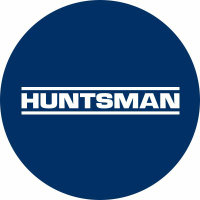
Bulten AB
STO:BULTEN


| US |

|
Johnson & Johnson
NYSE:JNJ
|
Pharmaceuticals
|
| US |

|
Berkshire Hathaway Inc
NYSE:BRK.A
|
Financial Services
|
| US |

|
Bank of America Corp
NYSE:BAC
|
Banking
|
| US |

|
UiPath Inc
NYSE:PATH
|
Technology
|
| BM |

|
Genpact Ltd
NYSE:G
|
Technology
|
| US |

|
Celanese Corp
NYSE:CE
|
Chemicals
|
| US |

|
Teledyne Technologies Inc
NYSE:TDY
|
Electrical Equipment
|
| US |

|
Clear Secure Inc
NYSE:YOU
|
Technology
|
| US |

|
Unity Software Inc
NYSE:U
|
Technology
|
| US |

|
Mohawk Industries Inc
NYSE:MHK
|
Consumer products
|
| US |

|
Bill.com Holdings Inc
NYSE:BILL
|
Technology
|
| US |

|
Sunnova Energy International Inc
NYSE:NOVA
|
Utilities
|
| US |

|
Kennametal Inc
NYSE:KMT
|
Machinery
|
| US |

|
Nike Inc
NYSE:NKE
|
Textiles, Apparel & Luxury Goods
|
| CN |

|
Alibaba Group Holding Ltd
NYSE:BABA
|
Retail
|
| US |

|
Lennar Corp
NYSE:LEN
|
Consumer products
|
Utilize notes to systematically review your investment decisions. By reflecting on past outcomes, you can discern effective strategies and identify those that underperformed. This continuous feedback loop enables you to adapt and refine your approach, optimizing for future success.
Each note serves as a learning point, offering insights into your decision-making processes. Over time, you'll accumulate a personalized database of knowledge, enhancing your ability to make informed decisions quickly and effectively.
With a comprehensive record of your investment history at your fingertips, you can compare current opportunities against past experiences. This not only bolsters your confidence but also ensures that each decision is grounded in a well-documented rationale.
Do you really want to delete this note?
This action cannot be undone.

| 52 Week Range |
61.3809
91.5
|
| Price Target |
|
We'll email you a reminder when the closing price reaches SEK.
Choose the stock you wish to monitor with a price alert.

|
Johnson & Johnson
NYSE:JNJ
|
US |

|
Berkshire Hathaway Inc
NYSE:BRK.A
|
US |

|
Bank of America Corp
NYSE:BAC
|
US |

|
UiPath Inc
NYSE:PATH
|
US |

|
Genpact Ltd
NYSE:G
|
BM |

|
Celanese Corp
NYSE:CE
|
US |

|
Teledyne Technologies Inc
NYSE:TDY
|
US |

|
Clear Secure Inc
NYSE:YOU
|
US |

|
Unity Software Inc
NYSE:U
|
US |

|
Mohawk Industries Inc
NYSE:MHK
|
US |

|
Bill.com Holdings Inc
NYSE:BILL
|
US |

|
Sunnova Energy International Inc
NYSE:NOVA
|
US |

|
Kennametal Inc
NYSE:KMT
|
US |

|
Nike Inc
NYSE:NKE
|
US |

|
Alibaba Group Holding Ltd
NYSE:BABA
|
CN |

|
Lennar Corp
NYSE:LEN
|
US |
This alert will be permanently deleted.
 Bulten AB
Bulten AB






 You don't have any saved screeners yet
You don't have any saved screeners yet

Hello, and welcome to Bulten's presentation for the first quarter 2023. My name is Ulrika Hultgren, and I'm in charge of Corporate Communication and Investor Relations at Bulten. Presenting the report are Bulten's President and CEO, Anders Nystrom; and our CFO, Anna Akerblad.
As usual, you will be able to ask questions after the presentation, both on the web as well as in the telephone conference. The agenda for today will be a brief overview of Bulten, the market development, the results for the first quarter and finally, some words about our focus going forward.
I will now hand over the word to Anders Nystrom. Please go ahead, Anders.
Thank you, Ulrika, and let's go to Slide 3 in the deck or an overview of Bulten. And as most of you know, Bulten is a supplier of fastener solutions. Our primary customer group is light vehicle and commercial vehicle OEMs. The customer is categorized as automotive suppliers and customers outside of the automotive industry are continuing to grow their share of our business.
It's important to know that we don't just supply hardware. To many of our customers were a partner for product development support, innovation, procurement and logistics. Bulten's 3 largest customers are still Ford, Jaguar Land Rover and Volvo Cars. They are and will remain important, but we have a number of new customers with strong growth in our based, and that's something that we welcome.
2022 full year sales reached close to SEK 4.5 billion, which is a 20% year-on-year growth from '21.
Turn to Slide 4. The vehicle production outlook provided by Global Data, formerly LMC Automotive, shows small movements from the last revision. Despite high inflation, interest rates and somewhat deteriorating consumer confidence, the outlook shows a fairly solid growth for the remainder of 2023 of around 4% for light vehicles and 6% for heavy commercial.
This means that global sales trends should give Bulten an expected 4.5% growth in 2023 with the market sector mix that we have. The growth is forecasted to remain at this level into 2024. However, it should be noted that there are regional deviations as well as deviations between OEMs.
Turn to Slide 5. The most important raw material for Bulten is steel wire rod. The prices for steel wire rod have now started to weaken which is favorable for our margins as customer price adjustments are made with approximately 1 quarter time lag regardless of the direction of the change. This means that in times of decreasing raw material prices, we do get a certain margin improvement.
Turn to Slide 6. In terms of energy prices, we have to assume that we will face continued uncertainties Prices have come down from its peak in the second half of '22. But the cost of electricity in Europe is still more than double compared to the old normal about 2 years ago. Energy efficiency is a key priority for us when we invest in our plants and machinery.
On Slide 7. One highlight in quarter 1 was the grand opening of our new surface treatment plant in Poland. We'll come back to that in a minute. We're progressing the actions we [indiscernible] regarding our manufacturing and distribution footprint in Europe with the wind down of the Pembroke plant and one of the Swedish warehouses. The increased ownership stake in TensionCam was an important move, which I'll also come back to in a minute, and the celebration of our 150th anniversary was and continues to be the cause of pride and joy throughout the company during this year.
Slide 8. As many of you know, Bulten acquired a minority stake in the start-up company TensionCam back in 2020. We did it because we believe in the technology and that the combination of TensionCam's sensors and Bulten's broader knowledge of the mechanics of threaded joints is a great combo to optimize the technical solution as well as providing customer value.
Since 2020, we work collaboratively on getting the technical solution ready. And as we are now going into commercialization, Bulten took a majority stake in the company, which is a logical step for us. What the technology does is that it enables real measurement of the clamp force achieved when torqueing a bold or nut. Clamp force measurement is really the holy grail to understand the health of the joint and preventing it from coming loose and cause excessive maintenance costs or even failures. And the early pilot projects we've done with a number of customers to date confirm the functionality and the market demand.
On Slide 9. Our new plant in Radziechowy-Wierpz in Poland was officially opened in January. Production is now being ramped up, which means that we're gradually moving outsourced plating operations from our supply base into our new state-of-the-art facility. The new plant is a game changer for us in terms of cost efficiency, flexibility, sustainability and inventory levels. The real estate around the plant also allows for further expansion on an as-needed basis for additional manufacturing operations in the future.
Next slide. And this year, as mentioned, we do want to recognize our 150th anniversary. Bulten was very much part of the Swedish industrial revolution when it was founded by Gottfried Rystedt, Nils Petterson and Herman Friedlander back in 1873. It's good to know that this company is as vital as ever growing in all 3 regions and moving our boundaries in terms of our customer groups, our product capability and being a sustainability leader in our industry.
And with those words, I'll leave the stage to Anna for the financial results in the quarter.
Thank you, Anders. On Page 11, you can see an overview of our quarterly sales the last years, including 12 months rolling sales. Sales was increased in the quarter with 34% compared to same period last year. Bulten delivered the fifth quarter with sales above SEK 1 billion, showing a positive trend.
Next slide, please. According to the waterfall, you can see the positive growth in rolling 12 months in all customer groups. On the right side, you can see that as a proportion of the year-to-date sales as of the first quarter, sales to other industries outside automotive has decreased in percentage compared to last quarter due to seasonality. Our main customer group, OEM light vehicles, had a good growth in the quarter and amounts to 68% of total sales.
Next slide. The first quarter delivered a strong EBIT of SEK 116 million, equal to 8.4% EBIT margin. Compared to last year, we had an adjusted EBIT margin of 7% and excluding onetime effects from divesting our Russian business. The EBIT margin is already at the level set for our strategy target of 2024.
Next slide. On Page 14, you can see that our earnings per share amounted to SEK 3.56 in the quarter compared to adjusted numbers last year of SEK 2.07.
Next slide, please. Cash flow from operating activities, including change in working capital amounted to SEK 196 million in the first quarter. Cash flow from investing activities amounted to minus SEK 40 million in the quarter. Cash flow from financing activities amounted to minus SEK 216 million. Total cash flow for the quarter amounted to minus SEK 16 million, with a cash position of SEK 392 million at the end of the quarter.
The increase in total assets compared to same period last year relates to increase in inventory, construction of new facility in Poland and new leasing contracts. Our net debt, excluding lease liabilities amounted to minus SEK 277 million for the first quarter, and we have continued to take measures to release tied up capital in inventory as stated last quarter.
Next slide, please. Our adjusted key indicators for 12 months shows a positive trend, both compared to last year's rolling 12 months and full year 2022. Our adjusted return on capital employed, including financial lease is at 11.9% for rolling 12 months. Our adjusted net debt and adjusted EBITDA ratio is at minus 0.6% at the end of the quarter, and our equity assets ratio, excluding financial lease, is at 51.7%.
Next slide, please. On Page 17, you can see our financial targets as well as some of the guidelines regarding relevant key figures for Bulten. Comparing with the same quarter last year, the growth in sales is 34% and both margin and return on capital employed has improved over previous numbers. In the table to the right, you can see some guidelines for some other key figures, and we are very much in line with our guidelines.
Guidelines for average net working capital in relation to 12-month sales is 20% to 25% depending on the growth pace. At the end of the quarter, our rollout months are at the level of 19%, which is positive. Additional measures have been taken to decrease tied up capital, as already mentioned, and increased sales also contributed. The guideline for capital expenditures as a percentage of 12-month sales are 2% to 3% for maintenance of equipment and additional up to 2% for capacity, depending on the market development.
At the end of March, the rolling 12 months level is at 4.7%, including construction of the new facility in Poland during last year. The guideline for depreciation as a percentage of 12-month sales is 4% to 5%, considering IFRS 16. Without IFRS 16, it has been in a level of 2% to 3%. And and we are in line with our guidelines.
Now back to you, Anders.
Thank you, Anna. And we turn to Slide 18 for a look into the rest of '23, where we, of course, have a number of focus areas. Firstly, we made a lot of progress in our inventory rightsizing activities, and we will continue with it as a priority in the next weeks and months. The plan to grow into nonautomotive sectors, both organically and through acquisitions is still very valid, and we maintain our focus on identifying the right targets.
As we already mentioned in this call, executing on our footprint improvements and the stock of the commercialization of TensionCam are very much on the radar. And we are now taking the step to rebrand our PSM units to use the Bulten name across the board, sending the message clearly that we are one company under one organization.
Next slide, please. Finally, it's appropriate to remind everyone of the strategy and our financial targets, which we stand by to be a SEK 5 billion company delivering 8% EBIT and 15% ROCE in 2024. I think you've seen that the last quarter is confirmed that we are on our way towards fulfilling these targets and that they are very realistic within the time frame we set.
And that concludes our presentation, and we're ready for questions.
[Operator Instructions] The next question comes from Mats Liss from Kepler Cheuvreux.
Yes. And congrats on solid numbers. Again, looking at the comments you made here on the steel price impact and so on. I guess you also mentioned that the steel rod prices have been stable. So I guess, should be sort of interpreted like you haven't seen so much support there yet.
I didn't quite get your question. Can you repeat it?
No. You started out with mentioning that steel prices could have been some support or could be supported given -- well, when prices ease and come down. Then again, you mentioned that steel rod prices have been sort of stable. So I just wanted to get a feel for if you -- how much you have helped the positive impact from lower steel prices in this quarter, I guess, or it still remains to be seen?
Well, I mean there is a little bit of that in quarter 1. As you can see, it started to flatten towards the end of last year and is now starting to come down. I'd say that we -- the improvement we see now is from the balancing of the pricing. So flattening at the top of that graph means that we are sort of in phase between customer pricing and costs at this point. And that, of course, gives us a margin improvement compared to quarter 4 last year.
And then, well, just to get a feel for the seasonality. I mean, historically, I guess, if I remember right, the second quarter usually is a bit -- well, seasonally stronger than the first and well, stories of the year. Is there any reason to believe differently this year?
Not really. The seasonality sort of stays the same, more or less. And we see stable volumes going forward, we could say.
Then that to get a feel about TensionCam, it seems like an interesting opportunity for you. And just haven't sort of got a full sort of information that actually need. But is this a move that you expect to gain market share from? Or is it something that you do to keep the position you have? If you can sort of make some comments there, please.
With TensionCam, we're actually entering into a completely new market where we're not active there at all today. I believe that the market demand is substantial. There hasn't been really an affordable technology to do this in the past. There are competing technologies and they all have their pluses and minuses, what we think we're offering to the market now with TensionCam is a very good value proposition to monitor and measure clamp force.
So I mean, the there is no real sort of estimate of the size of the market out there that we could sort of latch on to or there's no official data of that market. But that it's substantial. We are fairly certain. Then the time it would take to really get the technology out there, market it make it known to the players who would be requesting it. Of course, that's something we have to that has to be seen. But we have a plan. And it's early days. We're starting to commercialize it as we speak, and it's surely very exciting.
Sounds great. Then -- well, just -- yes. I mean, it's the second quarter now, you're trading above the 8% target. And I guess you expect second quarter to looks pretty good anyway. Is there any reason to indicate that you are ahead of the '24 targets? Or is it sort of too early to say?
Well, we don't give forecasts. So I'll leave it up to you to drive the conclusions, Mats. But I think you can at least come to the conclusion that the targets within reach. We know that there is certain seasonality over the year where quarter 3 is a little bit weaker because of customer shutdowns and vacations. But you can clearly see it's within reach. What seemed like a very ambitious target 3 years ago when we set them and publish them back in 2020 to the Capital Markets Day, as you remember, we come a lot closer. And yes, I think that's a conclusion you can draw.
The next question comes from Kenneth Toll Johansson from Carnegie.
Yes. Thank you. So I have a couple of questions. I'll take them one by one. First, on CapEx. You said that you have the guidance for sort of maintenance CapEx to 3% of sales. But you recently finalized the Polish plant. So I think there should be limited CapEx needs for that going forward. Do you have any other sort of major CapEx projects ongoing or starting up that I'm not really aware of? Or do you think it will be more sort of a maintenance and a few debottlenecking in 2023, please?
Kenneth, when we look at the CapEx, you are totally correct that we had our biggest investment in Radz in Poland, which we were affected by last year, which also is, of course, showing in the rolling 12 months numbers. If we look at the quarter right now, we are within the guidelines, more of the maintenance CapEx. So that is what we are seeing right now.
Great. So we will wait for press releases on the next big project, I guess. Then also on the Polish plant that you inaugurated in January and you're sort of gradually putting in more and more work there. When do you think that the Polish plant will be up and running so that it will contribute to lower operating costs for you?
That is being ramped up right now. And gradually between now and early 2025, then that's when it will be running full speed ahead with all of the different surface treatment specs that we're investing in. So there are still a couple of lines that aren't installed yet. The first 2 are up and running, but it's a gradual patient.
But could you say that already in towards sort of Q2 or towards the summer that you that it should have a positive EBIT margin effect because you're doing more of the work yourself, so to say, compared to outsourcing those operations?
I think you have to do those estimates. The only thing I can say is it will be phased in gradually from 0 early 2023 and to full production in the first half of 2025, yes.
Okay. Good. Then the some other questions. I mean, I saw in the annual report that you have a bit less business to the driveline now and a bit more to chassis, if I get it right. Does that have to do with the electrification? Or is it a deliberate strategy to change more into chassis? Or that does it affect your profitability in any way?
Doesn't really have an impact on profitability. There is no real difference in profitability between those different sort of functional areas in the vehicles. The gradual decrease in powertrain has more to do with the balance out and balance in the different programs. And I wouldn't say that it's directly connected to electrification. Now we still have a lot of combustion engines in hybrid vehicles, et cetera. So it's more to do with cycle plan changes than anything else.
Okay. Great. and it doesn't matter so much if it's an electric vehicle or a combustion engine vehicle, either for your profitability?
Not really. No. The only thing we've said before is that we can see that the new electric vehicle platforms that come our way that we have visibility into contain a lot of very interesting fastener products, and we're competing with them.
Okay. Great. And also coming back to Mats question a bit on the financial targets, I mean you are well underway for sales and margins. But if we look at return on capital employed, it's a bit lower than the target? Are you doing what is needed to happen for also returning on capital employed to catch up. Is it filling the capacity? Or is it reducing working capital? Or can you talk a little bit around those things, please?
Yes. So of course, there are many areas that are affecting the return on capital employed. And we are following this closely, we are having plans for this, and we are taking activities like we already mentioned about the inventory and so on. And I would say that we still feel confident with the targets that we have. We have measures in place and follow this up in a good way.
Okay. Great. That's all for me. And sorry for my dog disturbing the call, sorry.
There are no more questions at this time. So I hand the conference back to the speakers for written questions from the webcast and closing comments.
We have a couple of questions here via the web. So I want to read them and I will have Anders and Anna to answer them. There are 3 questions from [indiscernible]. I will read the first one. Thanks for another good quarter. Could you comment a bit on the market in China, which has grown a lot last couple of years.
Yes, I can. China has been a good market for us in the last few years, especially since the acquisition of PSM. One of the things that PSM did for us was that introduced Bulten to a number of new customer segments where consumer electronics was the biggest one. Consumer electronics really been the growth engine for us in China. And that's what you can see in the redistribution between the regions in the last 2 years, that's really the back end of that, and we're looking for that to continue.
And then another question regarding return on capital employed, and you already mentioned it, but I will read it anyway, if you want to say something further. Could you comment a bit on return on capital employed being a supplier to the car industry is notoriously a tough business? What makes you confident that you will reach the goal of 15% in returns on capital employed in 2024?
We already touched upon that, that we have good plans in place, and we are following this very closely. So we are very confident to reach the target.
And the last question from [indiscernible]. You have talked a lot about M&A. Is the business reason to reach scale in the U.S. Could you talk a bit about how much sales is needed in a specific market to achieve this? Or are these -- or are there other reasons for M&A?
Yes. The reason why we're looking for M&A in North America, we mentioned before that we do. There are a number of reasons for that, but they're all industrial. And you mentioned scale, yes, in terms of being an important player in the raw material market, you have to have a certain scale, which we don't have today with our operations there. We're simply too small.
It's also about access to secondary operations. Today, we're mainly a cold header in North America. We also need access to secondary operations like heat treatment and plating. And it wouldn't make much sense really to invest in those kind of assets if you're only growing organically. So that's why we're sort of looking for the right target profile to give us those types of in-house operations. Those are the industrial reasons.
Then, of course, we are also looking to spread our customer segmentation. We're completely focused on automotive in North America today. And as you know, we have the ambition to grow also into other customer sectors. Also in North America. We've done it successfully in other regions. I want to do it in North America as well. We believe that an acquisition is a way to accelerate that.
And then the last question that we received on the web goes like this. How is the market for light vehicle fastness affected by the new trends in giga megacasting, fewer fasteners in car bodies manufactured with giga mega casting?
Well, that's a very good question, an interesting one, actually, one I haven't had before. So congratulations. If you think about what the mega casting is replacing it's primarily cheap metal parts that are today or traditionally been joined by spot welds. So I'd say if I was in the spot weld business or in the weld gun business, I'd be more worried. I don't see that the castings are really making a dent into the count of fasteners in a vehicle or the types of fasteners that we're trading with. So good question, but no, actually, I don't see that as a fact.
And I believe that was the last question that we have here. So I will hand over to you, Anders, to close the call.
Okay. So thank you very much for spending the time and sharing with us we're happy for the progress we've made in this quarter and looking forward to presenting the next one to you in 3 months' time. Thank you very much, everyone.